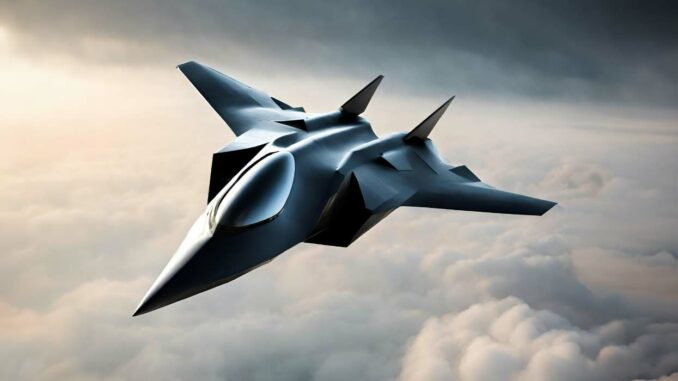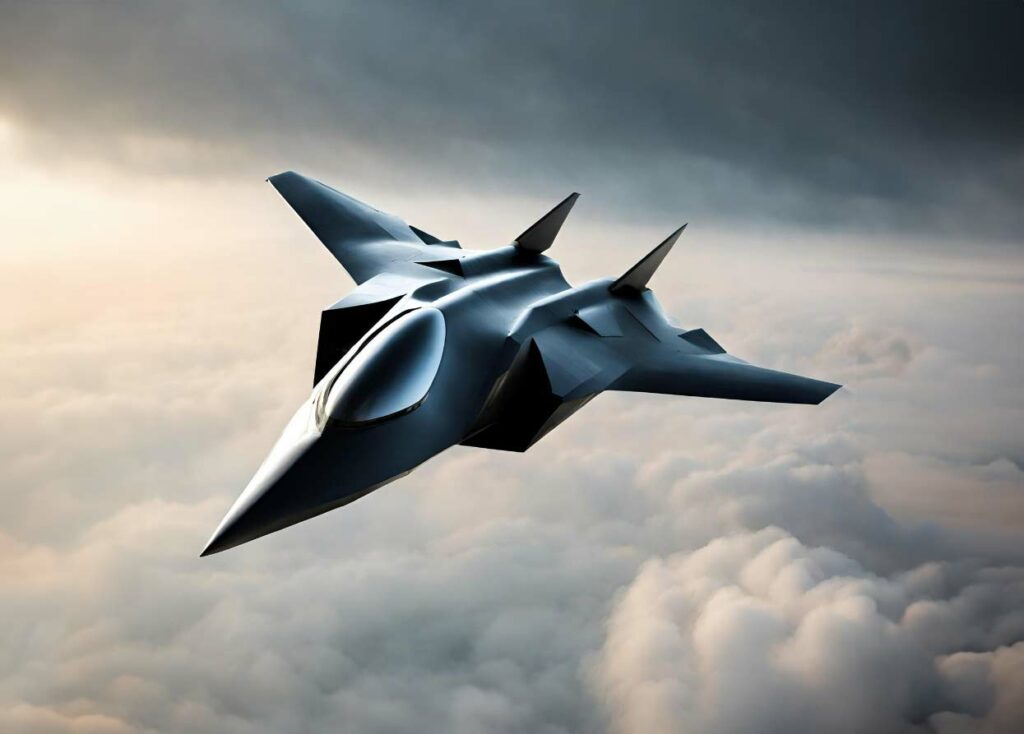
The Pentagon’s NGAD program marks a historic turning point in fighter jet development, integrating AI and advances in cyberwarfare.
NGAD, the future of air dominance: AI and technological innovations
The Pentagon’s Next-Generation Air Dominance (NGAD) program represents a pivotal moment in the history of fighter jet development, heralding a technical paradigm shift in air dominance. NGAD stands out for its integration
ation of artificial intelligence (AI) into military aviation, designed to enable continuous modernization, and by its fusion of technologies such as stealth, speed, autonomy and advanced cyber systems.
Stealth is a key element of the NGAD program, resulting from the use of advanced materials, aerodynamic designs reducing radar cross-section and infrared signatures, reinforced by radar-absorbing coatings. These materials and coating combinations make the aircraft difficult to detect.
In terms of speed, NGAD should achieve exceptional performance thanks to innovative propulsion systems and advanced aerodynamic designs. These technologies could include high-thrust engines and possibly scramjets, pushing the limits of speed.
NGAD’s autonomy is enhanced by robust communications systems and data links facilitating real-time information exchange. The integration of sensor fusion techniques similar to those on the F-35 will enable real-time situational awareness and autonomous adaptation to changing scenarios.

Strategic and operational impact of the NGAD program on air warfare
The NGAD program is likely to redefine military air capabilities and have a significant impact on air warfare strategy. The integration of AI and cyberwarfare technologies increases data processing speed and real-time decision-making, which is crucial for force synchronization and mission adaptations in a dynamic, connected battlespace.
The NGAD’s increased autonomy, combined with human-machine collaboration, will enable pilots to focus on strategic decisions while letting AI systems manage complex tasks. This approach improves overall aircraft performance, efficiency and survivability in modern combat scenarios.
The concept of NGAD as a “family of systems” introduces a new dimension in the conduct of military air operations. The idea of a manned combat jet coordinating nearby unmanned systems opens the way to more diversified combat strategies and more flexible operations. This includes the use of attritable but advanced drones, flying
alongside the NGAD, offering increased deterrence and strike capability while minimizing risks to human crews.
The integration of AI and advanced cyber systems into NGAD could also transform military doctrines, favoring a more integrated and connected approach to air warfare. The ability to network and share real-time data with other platforms, command posts and control centers significantly improves the responsiveness and efficiency of air operations.
In addition, the emphasis on stealth and speed is revolutionizing air combat tactics, making NGAD generation aircraft harder to detect and target, while enabling them to strike quickly and unpredictably. This evolution could force adversaries to rethink their own air defense and countermeasure strategies.
On the technological front, the NGAD program is likely to stimulate innovation in several areas, including advanced materials, propulsion systems, sensor fusion and AI. These advances could have spin-offs in other sectors, including civil aviation and the space industry.
Finally, the NGAD program poses challenges in terms of cost, development and integration of complex systems. The success of this program will depend on the ability of the Pentagon and its industrial partners to overcome these obstacles, while maintaining a balance between technological innovation and operational reliability.
The Pentagon’s NGAD program represents a significant evolution in air warfare, with the integration of AI and cyberwarfare technologies. These innovations will not only transform military air capabilities, but will also have a profound impact on future combat doctrines and defense strategies.
War Wings Daily is an independant magazine.